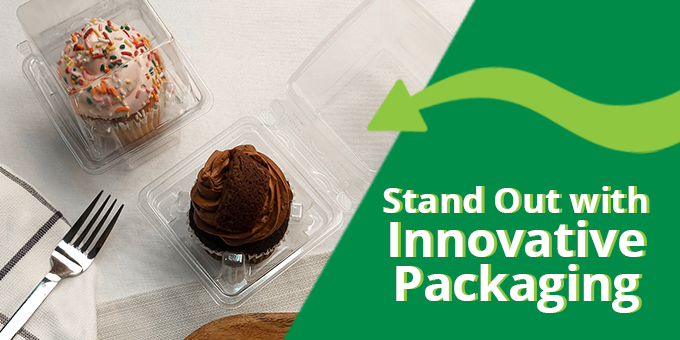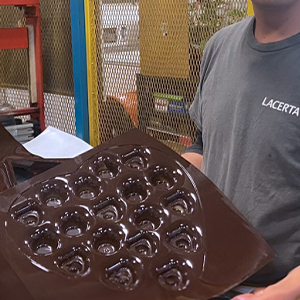
Innovative packaging design is about much more than standing out on the shelf. It should catch the shopper’s eye and make the food within seem appealing. Food packaging should also be thoughtful of the environment, designed to use less materials or more sustainable materials. Innovative food packaging also considers food safety and ease of use, from packaging the products to shipping to consumption at home.
In this post, we share custom food packaging expertise from our in-house design team, which has created innovative designs for some of the country’s top retailers and commercial food producers. If you’re looking for an innovative design for a new product or a fresh look for an existing one, these insights are for you.
Food Packaging Essentials
Before exploring innovative food service packaging ideas, let’s talk about the basics of food packaging. Here are the top elements you should consider when creating a custom food packaging design:
- Branding: Your food packaging design should reflect your entire brand's look and feel, not just on the label. For specialty foods, consider packaging made of materials that reflect the high-end nature of your brand. If you specialize in food that’s quick and easy to grab on the go, design lightweight and easy-to-open packaging that won’t break or spill in a backpack or grocery bag.
- Understand the audience and their needs: Does your ideal customer like to eat healthy, fresh foods? Or are they looking for comfort and convenience? Your audience’s preferences drive the kind of food you produce and how you package it.
- Keep it simple: No matter how eye-catching the packaging, if it’s challenging to open or fails to keep food secure and fresh, shoppers will not return for more. Instead, aim for simple, sleek designs that let the food shine.
- Know your materials: Whether your concern is strength or sustainability, every material offers pros and cons. Your challenge is finding the material suitable for your product and your customers. While some companies are exploring other materials, plastic packaging manufacturers are doing their part, focusing on reducing waste, circularity, and adopting more sustainable materials. The result is packaging that’s lightweight, strong, and can be made tamper-resistant and leak-resistant.
Step-by-Step: The Custom Food Packaging Design Process
When creating custom packaging designs, we focus on quality and precision every step of the way. Here is our five-step process.
1. Engineering Concept Development
We begin with a comprehensive review of your packaging needs, purpose, and requirements. Next, we develop an engineering concept to meet your needs and budget. Whether done solely in-house or hand-in-hand with the clients, we brainstorm ideas, evaluate needs, and conduct thorough market research to find an innovative solution. Our in-house design team typically provides initial designs with a no-obligation quote within a week. In addition to providing initial design drawings, you receive realistic renderings to showcase the container’s appearance.
2. Concept Drawing Review
During this step, you can review the drawings and renderings and provide feedback for revisions. This is an opportunity to get further into the packaging details, such as selecting color, materials, thickness, barrier, and coating.

3. Prototyping
Before you finalize your food packaging, we provide a prototype made in-house with the materials you’ve selected. Once created, we assess the prototype to ensure it meets the precise specifications and features, such as snap, lid integrity, secure film seal, product-packaging interaction, and tamper resistance, depending on the design.
Our CNC milling and prototype thermoformers let us turn around prototypes in one week.
4. Molds and Tooling
This is when we bring in the Engineering and Manufacturing teams. Together, they review the designs and look for ways to optimize run times based on the type of package, such as adding robotics, automation, cooling, gun drilling, and stacking. Molds and tools are then created for production, made in our own machine shop. Before releasing to production, the molds are evaluated and tested to ensure they meet specifications.
At Lacerta, we also run a life cycle assessment (LCA) at this stage to gain more insight into the package's sustainability and the processes used to make it.

Photo: This is a mold that was created for chocolates made by Lacerta for a customer.
5. Thermoforming Production
Full-scale production begins once the molds and tooling are tested and meet specifications. This includes manufacturing packaging on thermoforming machines. At this stage, your vendor may also be able to print graphics, colors, and patterns on lidding or print and adhere labels. Testing and qualifying packages continue throughout the production run to ensure quality. Finally, the packaging is released to customers, used to package the products they make, and can be found in stores.
We’d love to show you what we do best. For more information about our custom design process, contact our packaging experts.




